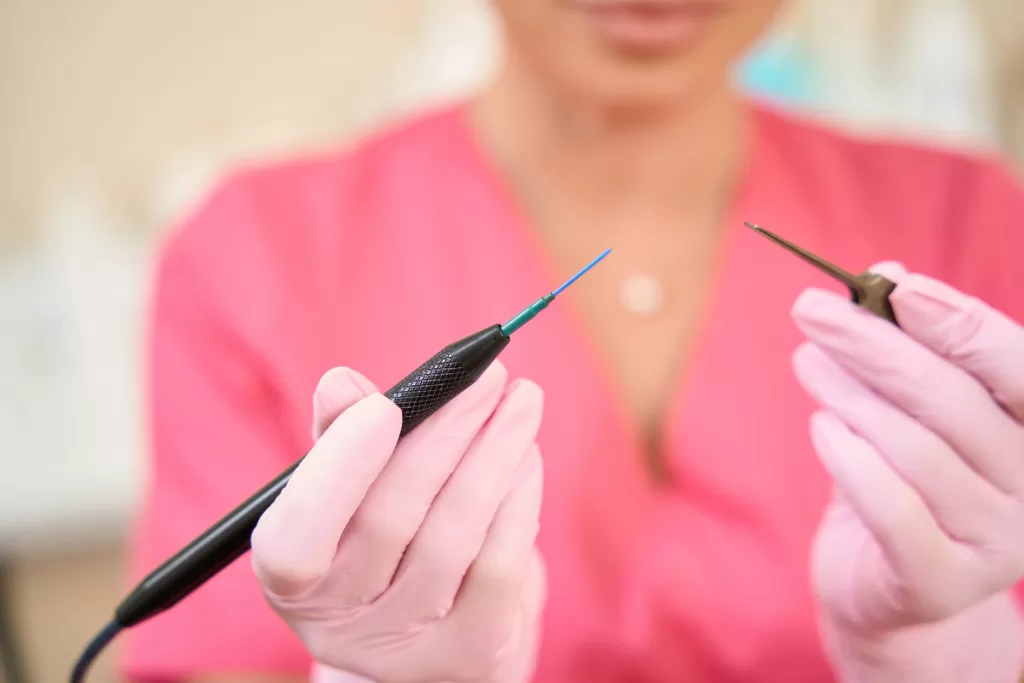Scrotal Angiokeratoma
Medically Reviewed by Dr Aifric Boylan
Last updated on 14.08.2024
Scrotal angiokeratomas are small, raised, red or purple bumps that are noncancerous and quite common. Although angiokeratomas can appear anywhere on the body, this article focuses on those found on the scrotum, known as angiokeratomas of Fordyce. These lesions are particularly common, with their prevalence increasing with age. About 6% of men in their 30s have scrotal angiokeratomas, and this figure rises to 16% for men over 70.
In most cases, the exact cause is unclear. However, in rare instances, scrotal angiokeratomas may be linked to genetic conditions or certain medications.
What are the symptoms?
Scrotal angiokeratomas are painless and harmless, and they do not turn cancerous. While some men may have just one lesion, others can develop hundreds. These lesions are primarily a cosmetic concern, but they can lead to psychological distress if their appearance causes anxiety.
The color of the lesions can vary based on your skin tone and the size of the bumps. They can range from light pink to dark red, deep blue, black, or dark purple. The lesions are raised and may feel rough to the touch, but they are not physically painful or uncomfortable. Angiokeratomas rarely exceed 5mm in size.
For individuals with lighter skin tones, scrotal angiokeratomas are more noticeable, while those with darker skin may find the lesions less visible. In rare cases, the lesions may bleed, especially if they are large, located in areas where skin rubs together, or if you are taking blood-thinning medications.
How is it diagnosed?
Your doctor will usually diagnose scrotal angiokeratomas via a clinical examination.
If there is some uncertainty about skin lesions on your scrotum, your doctor may perform a skin biopsy to exclude conditions like melanoma or pyogenic granuloma.
What is the treatment?
Scrotal angiokeratomas generally do not require treatment. If they cause problems such as bleeding or psychological stress, the lesions can be removed with:
- Excision: this means removal with a scalpel. It is best if there are less than a handful of lesions.
- Laser: there are different types of lasers that can be used for scrotal angiokeratomas. These are a good option if there are many lesions.
- Cauterisation: this is an electrical current that damages the small blood vessel that creates the lesions.
- Cryotherapy: this is liquid nitrogen that freezes the blood vessel that creates the lesion.

Getting a Mental Health Care Plan in Australia: Your Guide
Getting a Mental Health Care Plan in Australia: Your Guide Mental health matters—and if you’re feeling overwhelmed, anxious, or down, a mental health care plan can help. But what is it, and how do [...]
UTI Symptoms and Treatment: What You Need to Know
UTI Symptoms and Treatment: What You Need to Know Urinary Tract Infections (UTIs) are common, uncomfortable, and often disruptive. But what exactly are the signs to watch for, and how can you get relief [...]
Free Mental Health Care Plan Online | Bulk-Billed by Qoctor
Free Mental Health Care Plan Online | Bulk-Billed by Qoctor Discover how to get a free, bulk-billed Mental Health Care Plan (MHCP) in Australia through Qoctor's telehealth service. Accessing [...]




